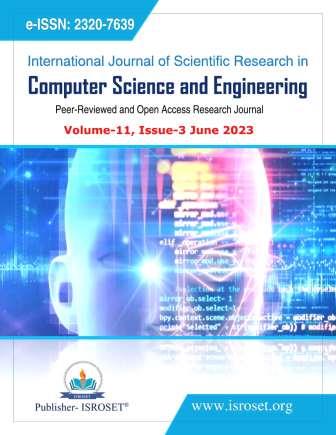Traffic Flow Modeling of University Road Peshawar Using Simulation
Keywords:
Simulation technique, Automobile oriented, VISSIM, Traffic Flow Modeling, Data Collection, Data AnalysisAbstract
The city of Peshawar is facing a severe traffic problem due to the rapid increase in population and the inefficient public transport system. This study focuses on analyzing the main reasons for traffic congestion in Peshawar and proposes a solution through traffic simulation modeling. The lack of traffic signals, narrow roads, and lack of awareness about traffic laws contribute to the traffic jams. The study aims to develop a PTV VISSIM traffic simulation model and improve the transportation system to improve the traffic congestion problem. Data collection is conducted at different locations and times, including vehicle speed, types, and length. The findings will provide insights for better traffic management and infrastructure planning in Peshawar.
References
Maitra, B, “Microsimulation based evaluation of Queue jump Lane at isolated urban intersections,” Journal of Transport Literature., Vol. 9, pp. 10-14, 2015.
Zhang, X, Adamatzky, A and Yang, X.S, “A Physarum-inspired approach to supply chain network design,” Science China. Information Sciences., Vol. 59, pp. 1-14, 2016.
Zhang, X, Chan, F.T.S and Adamatzky, “An intelligent physarum solver for supply chain network design under profit maximization and oligopolistic competition,” International Journal of Production Research, Vol. 55, pp. 244-263, 2017.
Ambarwatia, L, “An Empirical analysis of heterogeneous traffic flow,” Proceedings of the Eastern Asia Society for Transportation Studies, Vol. 9, 2013.
Rakha, H, “Systematic verification, validation and calibration of traffic simulation models,” Transportation Research Record, Vol. 1876, pp. 20-31, 1996.
Gabriel, G, “A micro simulation model of congested freeway using VISSIM,” Transportation Research Record., Vol. 1876, 2004
Abuamera, I.M and Celikglua, “Local ramp metering strategy ALINEA: microscopic simulation based evaluation study on Istanbul freeways,” Transportation Research Procedia., Vol. 22, pp. 598-606, 2017
Arasan, V.T and Arkatkar, S.S, “Microsimulation study of vehicular interactions in heterogeneous traffic flow on intercity roads. ISTIEE,” pp. 60-86, 2011.
Greenshields, B.D, Channing, W. and Miler, H.A, “A Study Of Traffic Capacity. In Highway research board proceedings,” National Research Council, pp. 448-477. 1935.
Enrique Saldivar-Carranza, Jijo K. Mathew, Howell Li, Darcy M. Bullock, “Roundabout Performance Analysis Using Connected Vehicle Data,” Journal of Transportation Technologies, , Vol. 12, 2021
Yu, L, “Calibration Of Platoon Dispersion Parameters On The Basis Of Link Travel Time Statistics,”, Journal of the Transportation Research Board, Vol. 1727, pp. 89-94, 2000.
Barcelo, J, “Simulation Modelling Applied to Road Transport European Scheme Tests (SMARTEST),” IATSS Research, , Vol. 43, pp. 27-36, 2019.
Downloads
Published
How to Cite
Issue
Section
License

This work is licensed under a Creative Commons Attribution 4.0 International License.
Authors contributing to this journal agree to publish their articles under the Creative Commons Attribution 4.0 International License, allowing third parties to share their work (copy, distribute, transmit) and to adapt it, under the condition that the authors are given credit and that in the event of reuse or distribution, the terms of this license are made clear.







